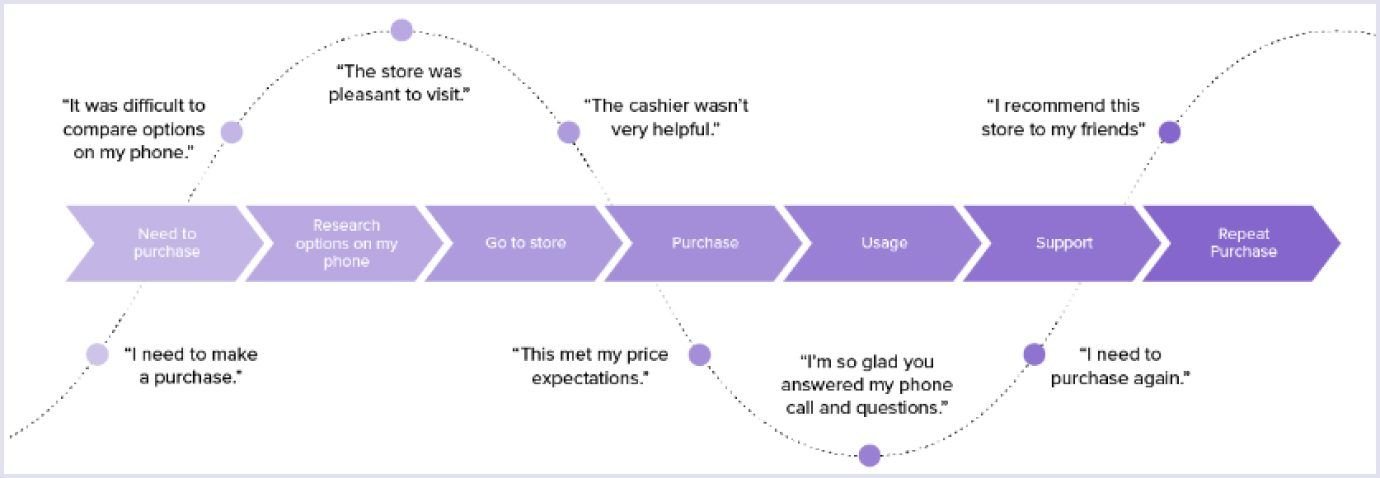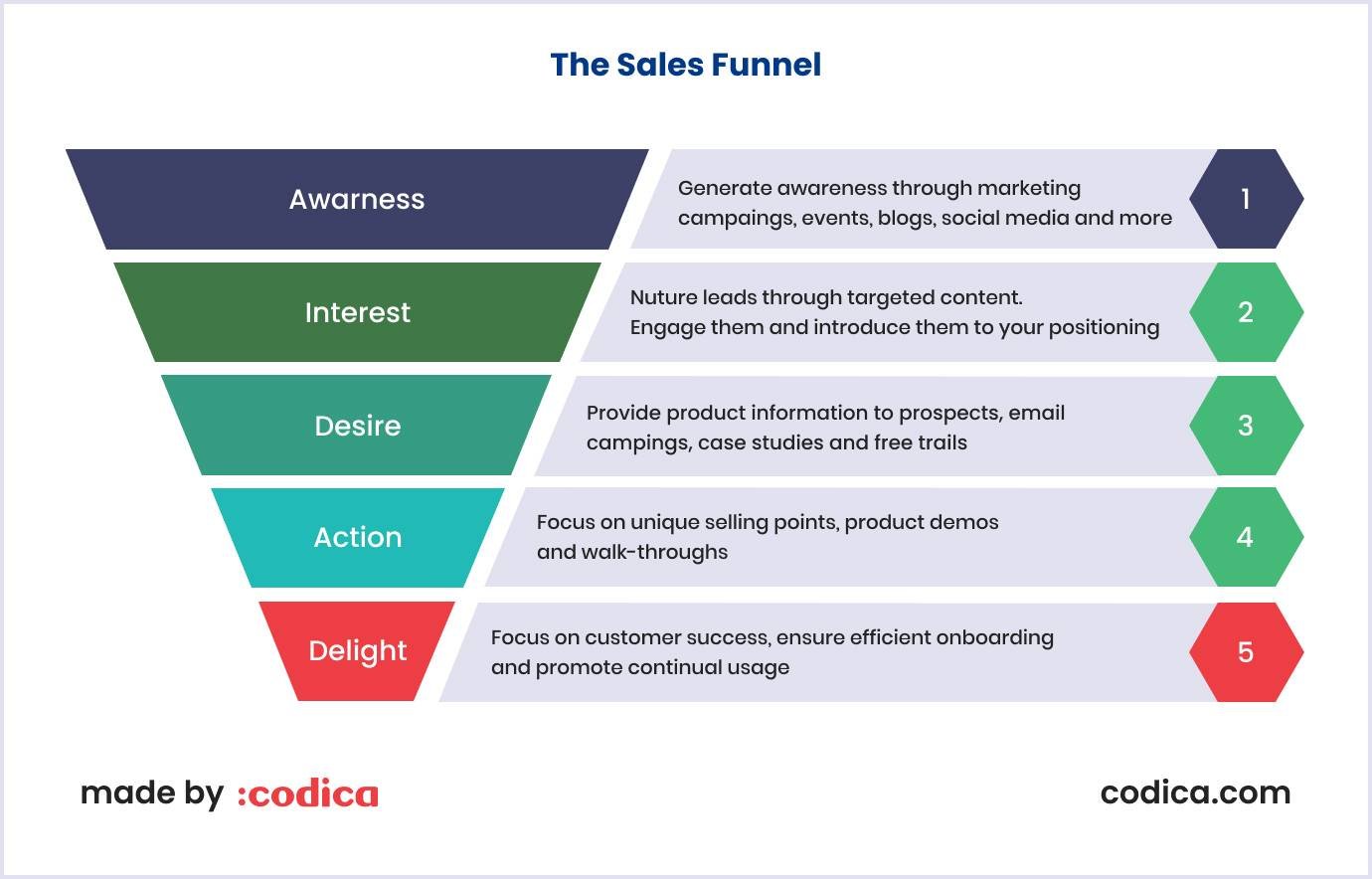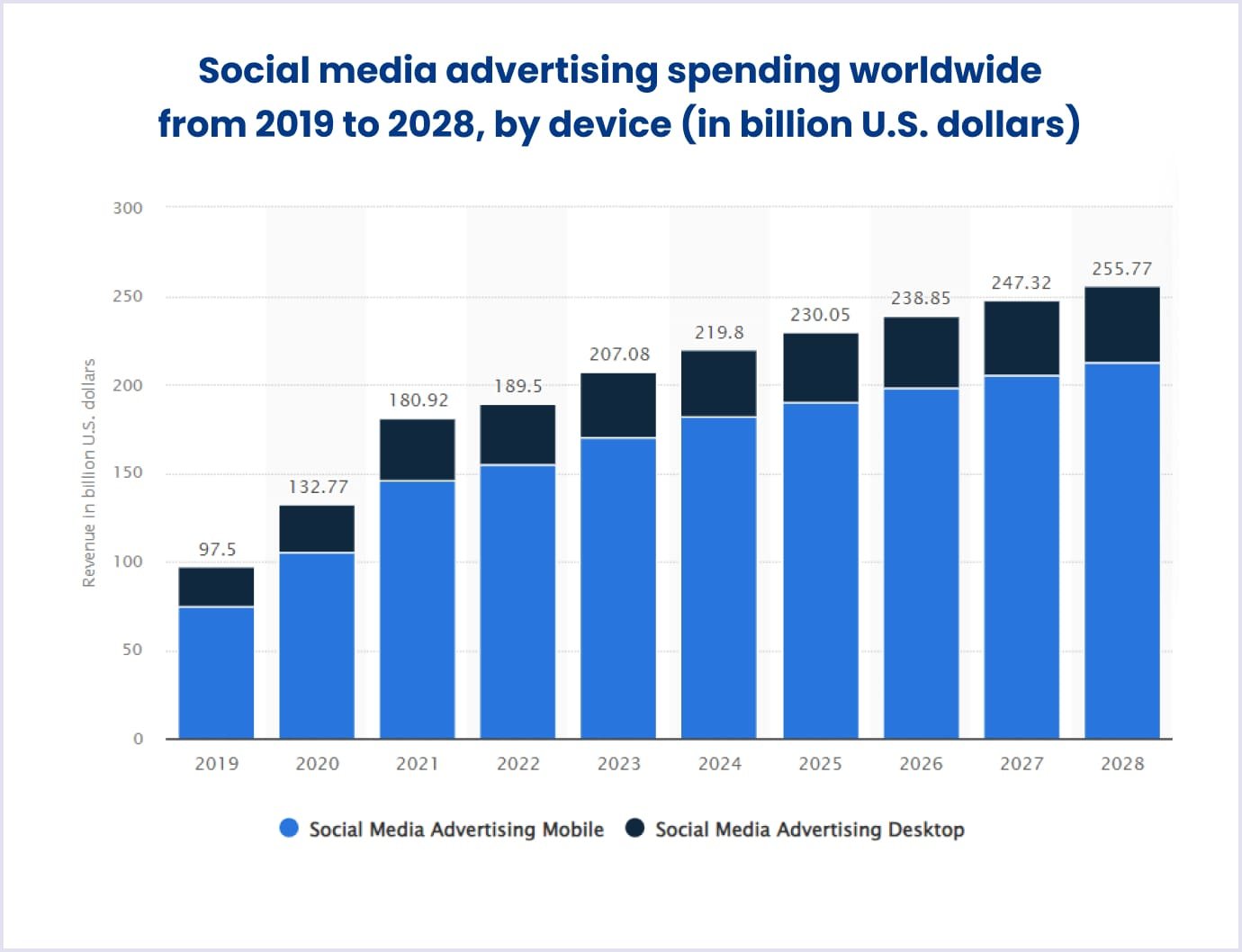Promoting a marketplace means planning and building a strategy. Buyers and sellers won’t necessarily see the value of your eCommerce store, so you need to highlight it for them. That’s where the marketplace marketing strategy comes to help.
The earlier you plan to promote your platform, the faster you will gain customers after you build your online marketplace. If you already have an audience, a marketing strategy will assist you in maintaining your business.
There are different tools for promoting your online store. This article discusses the marketing strategies that will help you with promotion and how to use them best.
What is a marketing strategy?
Before discussing how to promote an e-commerce store, let’s define a marketplace marketing strategy. It is a plan designed to describe a company’s marketing goals. This plan includes a description of market research and a selection of promotion tactics. It is advisable to select the marketing strategy before starting your e-commerce marketplace development.
The video below provides helpful information about creating a working marketing strategy and how it can benefit your business.
When creating a marketing plan for your online marketplace, you need to explore several aspects. These aspects will help you develop an efficient marketing plan according to your brand’s value. Let’s discuss these aspects in more detail.
Niche and competitors’ research
Analyze and evaluate online marketplaces in your niche. Identify their products, pricing, and marketing methods. This will help you outline your benefits compared to competitors’ marketplaces.
Exploring the target audience
When you do market research, make a profile of your potential customers and their needs. Reveal what, when, and where they buy. These buying patterns allow you to keep your online store marketing strategy relevant. As your customers’ behavior changes, you can adjust your strategy depending on the new marketplace trends.
It is worth noting that the target audience may be wide. In this case, segmenting the audience is essential to understanding how to influence each group.
Unique selling proposition (USP)
Before you promote your online store to others, define what is unique about it. Few businesses offer one-of-a-kind services or products. Thus, you need to show your customers what is special about your online marketplace. If you highlight your unique feature, it will help you in the promotion.
Outlining USP requires effort and creative thinking. You can start by analyzing how competing marketplaces use USP. You can examine their ads and marketing messages. This will help you learn how they distinguish themselves from competitors.
To understand and present the USP of your eCommerce store, rely on the three main aspects relating to your customers:
- Understand your customers’ needs;
- Know your customers’ buying patterns and decisions;
- Reveal why customers would like your marketplace over the competitors’.
For example, Neiman Marcus, a chain of department stores, sells luxury. Meanwhile, Walmart, an eCommerce corporation, sells bargains.
Read also: How to Create an Online Service Marketplace: The Ultimate Guide
Customer journey map
It is also called a buyer or user journey and is a visual presentation of how a customer interacts with your store. The map helps trace customers’ behavior at different touchpoints in your online marketplace. Thus, you can optimize and personalize customers’ experiences with your marketplace. The scheme below illustrates the possible user journey.

Source: delighted.com
As you can see on the scheme, the touchpoints can start with a customer searching for a convenient online store. Then, a customer makes purchases there and contacts support. Also, typical interactions include viewing the store's social media posts. Each touchpoint describes a customer's action and how your team responds.
User journey mapping reveals your customers’ needs. So, you can improve their experience in your online marketplace according to their expectations.
Sales funnel
The sales funnel is a scheme that describes where a person stands in their buying journey. This movement starts with a prospect learning about your brand. In further steps, you provide information on your platform to engage and persuade the prospect to buy. The end is becoming a repeat customer loyal to your online marketplace.
Below, you can see a graphic depiction of the main steps in the sales funnel. Also, it shows the actions you can take to move the potential clients down the funnel.

9 best ways to promote your online marketplace
Based on the marketing strategy, you can choose approaches to promoting your online business. Before we proceed, take into account the following vital aspects of the marketplace promotion:
- The communication channels are efficient only when they are used in combination;
- When choosing your promotion tool, you need to know your client first and understand where you can find them;
- Marketing and promotion are continuous processes. Therefore, testing new audiences and client-engaging tools will develop over time.
With that in mind, let’s see what promotion methods you can apply to your online business in detail below.
1. SEO strategy and optimization
Running an online platform gives you the opportunity to reach a wider user base. But this does not come automatically. You need to adjust your website to rank higher in search engines, which will help drive traffic to your store.
Start with understanding how your users think. What drives them to your platform? How do they search for items they need? Answers will help you find the correct language in your eCommerce store to approach your customers.
You can use the Keyword Tool to reveal the words users often search for on the web. Keywords tell search engines about your website. So, thanks to keywords, your prospects will find your website relevant to their needs.
Read also: How Much Does It Cost to Build an Online Marketplace in 2025
Your platform's content should help users find items or information quickly. So, the items' descriptions, images, or blog posts should be concise and helpful.
Meta tags are also crucial when you use SEO (search engine optimization) for the marketplace marketing strategy. Title tags that describe your pages need to be unique. Another part visible to search engines is a meta description, a short story of what the page is about. Try to make title tags and meta descriptions as informative as possible. At the same time, note that they have limitations on the number of characters.
Link building is another crucial technique for promoting your marketplace in terms of SEO. In short, it means creating links from other resources that lead to your website. Efficient link-building comes from creating valuable content on your website or as guest posts. You can also build partnerships with established websites that will place links to your online store.
Consider the following SEO aspects that will help you make your website visible on the Internet:
- Speed optimization and adapting the website for better Core Web Vitals ranking;
- Breadcrumbs that replicate the menu and help users to navigate through the website;
- Online customer ratings and reviews;
- Sitemaps. This aspect is essential for big websites. For them, sitemaps are divided into several parts with the limitation of 50 thousand URLs;
- SEO-friendly URLs that are simple and easy to read.
For example, our team proved the efficiency of SEO optimization when building a travel marketplace. As a result of optimization efforts, the platform doubled its revenue. See how it works in the video below.
2. Social media marketing
Social media can connect you to many customers and engage your prospects with catchy images and entertaining videos. Top social media include YouTube, WhatsApp, Facebook, and Instagram, as of July 2024.
If you have an audience on social media, you can strengthen your position. Improve the frequency of your posts and create short, appealing videos. Your content on social media should be helpful and engaging. In your posts, focus on topics that solve your customers’ pain points. Also, it is better to focus on the channels where you get a good response from sellers and buyers.
If you want to develop your social media profile, keep your profile picture and feed appealing and informative to users. For example, you can use short-form videos, the most popular format of posts used by 56% of marketers.
Also, pay attention to the right keywords and hashtags. They should reflect the industry you are in and be relevant to your target audience’s interests.
You may also like: How to Build a Multi-Vendor Marketplace from Scratch
3. Collaboration with influencers and media
Influencers are people who have many subscribers or followers. They can influence their audience’s opinions and purchasing decisions, so it is helpful to include cooperation with influencers in your marketing strategies.
Influencer marketing is a high-yielding way of promoting your online store. Businesses receive a $5.78 return on investment (ROI) for every $1 spent on influencer marketing.
Before cooperating with influencers, checking if their views align with yours is helpful. Ensure their audience is interested in your online marketplace, products, or services. Also, the values of the influencers and your target audiences need to be aligned with your platform.
For example, Amazon has an influencer program to promote its online business. You can monetize your content by becoming Amazon's influencer if you have YouTube, Instagram, or Facebook accounts. Users create storefronts on Amazon and promote this marketplace with their content. An influencer earns a commission based on the amount of qualifying purchases and product categories.

4. Email marketing
Even if you own a small marketplace, having a well-thought-out email marketing strategy is helpful. Emails to your customers and prospects are valuable tools to spread the word about your marketplace. When you just started your business, you can tell them about your platform with emails.
By the way, technology is on your side. There is an abundance of tools and integrations that help automate email marketing processes. Mailchimp, Emailsmart.io, and Drip, just to name a few of them.
With emails, you can offer your prospects discounts on promotions or referrals. This will encourage them to share information on your marketplace with their relatives and friends. Also, you can use pop-up boxes that attract users’ attention and enable them to write their emails. You can offer free services or discounts for the first purchase at your eCommerce store.
Email communication should be steady and engaging. Include news on products and informative content in emails. This information will prompt people to go to your website.
For example, Upwork, a freelancing marketplace, offers email subscriptions with specific topics. Freelancers can get personalized emails with job recommendations based on their skills and completed projects. For clients, the platform provides freelancer highlights, project updates, and incentives to post listings.
5. Google and social media ads
Google Ads is an efficient tool for creating a marketplace marketing strategy. It works with keywords that users frequently search on the web. The results of such a search are given on the search engine result page (SERP). Your aim is to get higher in the SERP. If you pay for an ad that includes the keyword, your ad will go on top of the regular keyword results.
Google ads work on the keyword bidding model. You set a maximum price you are ready to pay for an ad. You get on top if you offer more than your competitors. As your online marketplace ranks above other results, a user will likely become your prospect.
However, the ad's ranking also depends on your website's quality. Google Ads includes an Ad Rank system that judges which ad is more practical. So, you can win with a lower CPC (cost per click) if your Quality Score ranks high.
Also, you can benefit from other types of Google ads. For example, Google offers banner ads, Shopping Ads, and Video Ads on YouTube. You can also promote your marketplace through Google apps, such as Google Play, Search, and Google Display Network.
Another powerful ad tool is using ads on social media platforms. Social media ads are expected to grow at a CAGR of 3.86% in 2024 - 2028 and reach $255.8 billion by 2028.

Source: statista.com
People spend a lot of time viewing updates on Instagram, Facebook, and Twitter, so these and similar social platforms are a rich source of potential customers.
Using photos and videos to showcase your marketplace, its products, and services is helpful. The best approach is to begin by presenting how your product is applied. You can also highlight significant events or discounts that you have in the eCommerce store. Start low and check how imagery works for your user base in a week or two.
Related reading: 10 Best Marketplace Monetization Strategies to Succeed
6. Affiliate marketing
Setting up an affiliate program means that users on your marketplace platform promote it via special links. Marketplaces launch their affiliate programs with the following common aspects:
- Affiliates, such as websites, bloggers, and other partners, receive commissions from the marketplace to generate sales;
- A marketplace provides special referral links through which sales can be generated and tracked;
- Affiliate partners can use any sources to put their links, which gives affiliates flexibility in relationships with the marketplace;
- Your marketplace receives a long-term, ongoing promotion in this case.
For example, Udemy, an online learning marketplace, uses its affiliate program that benefits both sides. Udemy gets promoted, and affiliates get decent commissions. Udemy provides assets for promotion and sales tracking.
7. Content marketing approach
Your website content is excellent for staying connected with your target audience. To help this, create various types of content that improve user experience by addressing customers' pain points. Help them and give them practical knowledge. With valuable takeaways from the content, they will return to your online marketplace.
Check what content works best for you and focus on it. First, you can create blog posts for content marketing. They can include guides on how to use your product. Also, you can create videos and podcasts.
When creating content, it is advisable to combine guides with promotions. Such an approach makes helpful notes for your sellers and buyers. So, promotions will go naturally.
Besides, each blog post grows to various other content marketing pieces. For example, you can do the following:
- Expand each section of a blog post into a separate article;
- Include the info on the blog post in emails;
- Record the blog post as a short video for YouTube or a podcast.
By the way, you can make use of your content even more. The information you have created can be valuable for communities in forums and thematic websites, such as Medium or Quora. You can post articles or answer the questions referring to your marketplace.
Thus, several channels of content marketing allow you to cover a wider audience.

8. Promotion events or partnerships with complementary brands
Building partnerships with complementary companies also help you promote your online marketplace. In this case, you can gain a user base with potential interest in your platform, yet it will be new. For example, a ski rental marketplace could partner with resorts for promotion.
When you want to attract more customers, the possible promotion activities could include sharing one podcast or blog post. Together, you can also suggest a shared gift. If you gained an audience with a stable interest in your brand, you could offer discounts or free second purchases.
For example, BeautyBio, which sells beauty products, partnered with UrbanStems, a flower store. Together, they decided to raffle cosmetics among BeautyBio followers. One condition was following UrbanStems and BeautyBio on Instagram. This promotion helped both stores enlarge their user base.

Source: BeautyBio on Instagram
Webinars and online conferences are another way to raise your marketplace awareness. This way, you will present your website to many people. Also, you will strengthen your expertise in your online marketplace niche. Thus, you, as a founder, gain another benefit: a potential opportunity to become an influencer for your brand.
Such conferences will help you gather useful contacts if your marketplace is a startup. Also, the conferences will create the first user experience, which is useful for improving your online store. For established marketplaces, online presentations are a way to find new investors or vendors.
You may also like: 11 Top Payment Gateways for Online Marketplaces
9. Mobile app optimization
Having a mobile version of your marketplace is like giving your customers a direct and seamless connection to your products, no matter where they are. Your app optimization is also a tool in mobile app marketing strategy. Here are some tips that will help you with that:
- App store optimization (ASO) for marketplace apps. Consider making your marketplace app visible with an engaging and informative description, app screenshots, and encouraging positive reviews.
- Use in-app engagement strategies. Ensure that users have convenient and helpful onboarding. You also can use gamification and personalization in your app.
- Retention techniques. Provide loyalty programs and updates that keep your customers returning. You can also collect feedback on your app and use it to make improvements.
- Paid advertising for your marketplace mobile app. You can use paid ads in the app stores, like Apple Search Ads or Google Play Ads. Moreover, influencers on social media can also promote your app and help you increase marketplace app downloads.
- Cross-platform marketplace mobile app promotion. As your marketplace website attracts sellers and buyers, you can use it to promote your app. Non-intrusive pop-ups, emails with mobile app descriptions, and referral programs are ways to go.
Our expertise in marketplace development and promotion
As an online marketplace development company, we understand the importance of a marketing strategy for an online marketplace promotion. Therefore, we start the marketplace development process with a product discovery phase. This is an introductory stage when we collect information on the project's market potential, business goals, and risks.
As a result of the discovery sessions, our client receives the necessary project documents. These include product specifications, a list of features, and recommendations on the tech stack. We also provide time and cost estimates to our clients. Check the video below for more details.
In product discovery, we help our clients define the business model and monetization strategy. Indeed, if the client already has an idea of them, we can give feedback on the feasibility of the chosen approach. So, the discovery results help the client create an efficient online store marketing strategy.
When creating marketplaces, we adapt them to improve search engine optimization. Our team adds integrations with tools that help maintain and monitor the online marketplace's efficiency.
One of our cases was improving the TradeRV online marketplace for campers. The website needed enhancements to reach a wider audience. We optimized choosing paid packages that help sellers and dealers promote their listings. After our website redesign services, the website saw increased user engagement and traffic.
The video below presents how this online marketplace works.
The right marketplace marketing strategy helps you grow
Marketing strategy is vital for growing your online marketplace. Selecting the right approach means a better appeal to your customers and a benefit to your business.
The marketplace marketing strategy is primarily based on understanding your customers’ needs. Another critical point is properly presenting your marketplace's unique value. Based on these main aspects, you can select tools to promote your online business to reach wider audiences.
Codica's portfolio includes cases of building and enhancing marketplaces. If you want to create an online marketplace or improve an existing one, contact us. Our team of experts will advise you on the technical or business solutions or improvements that will help your platform thrive.

